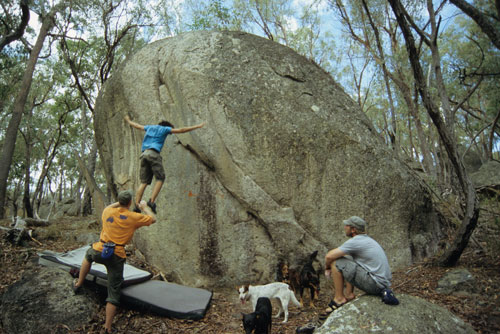
Simply Euro Boulder: Definition, Ideas, History & Key Facts

The **Simply Euro Boulder** phenomenon represents a significant shift in the realm of climbing, merging style, technique, and community spirit into one engaging experience. The term encapsulates the essence of bouldering across Europe, combining simplicity with innovative approaches to this adrenaline-pumping sport. In this article, we will explore the intricacies of **Simply Euro Boulder**, its historical evolution, and its impact on climbers around the globe.
As bouldering continues to gain popularity, the notion of **Simply Euro Boulder** emphasizes not only the physical aspects of climbing but also the mental and social elements that enhance the experience. It transcends mere athleticism, fostering an environment where climbers can connect with one another while enjoying the beauty of nature and the challenge of the climb. Understanding the **Simply Euro Boulder** movement is crucial for anyone interested in the world of climbing, whether you are a novice or an experienced climber.
Definition of Euro Boulder
The **Simply Euro Boulder** movement refers to a specific style of bouldering that originated in Europe and emphasizes simplicity and accessibility in climbing. This approach prioritizes minimalism, focusing on the essential elements of the climb—balance, technique, and problem-solving—over complicated gear and high-risk environments. In essence, **Simply Euro Boulder** embodies the idea that climbing can be both challenging and rewarding without necessitating extensive preparation. Depending on the climbing location, this style often favors shorter height routes, encouraging climbers to hone their skills while experiencing the thrill of reaching new heights.
Key Characteristics of Euro Boulder
Some of the defining traits of **Simply Euro Boulder** include:
- Accessibility: Routes are often designed to be approachable for climbers of all skill levels.
- Community-focused: Climbers are encouraged to engage with one another, supporting and sharing tips.
- Simplicity: Less reliance on unnecessary gear promotes spontaneity and ease.
- Innovation: New techniques and ideas are constantly being developed, adapting to the natural features of climbing locations.
Historical Background of Euro Boulder
The roots of **Simply Euro Boulder** can be traced back to several key developments in climbing history. Bouldering, as a form of climbing, achieved acknowledgment as an essential discipline in the early 20th century. As climbers began to recognize the unique challenges presented by bouldering, Europe became a hub for this sport, with regions like Fontainebleau in France emerging as iconic locations. During this period, climbers adopted more casual and communal approaches to the sport, emphasizing the joy of climbing over competitive endeavors.
The Influence of the 20th Century
The growth of outdoor sports during the mid-20th century contributed significantly to the **Simply Euro Boulder** ethos. The burgeoning counter-culture movements prized freedom and exploration, motivating climbers to seek more innovative routes and challenge their capabilities. This shift towards an appreciation for nature, creativity, and personal expression solidified the foundation for what we now recognize as **Simply Euro Boulder**.
Key Ideas Associated with Euro Boulder
Several key ideas underpin the **Simply Euro Boulder** movement, including:
- Freedom of Expression: Climbers are encouraged to approach each problem in their own way.
- Community Engagement: Fostering connections among climbers enhances the overall experience.
- Self-discovery: The climbs are seen as tools for personal development and growth.
- Inclusion: Welcoming diverse backgrounds and skill levels fosters a welcoming atmosphere.
Notable Figures in Euro Boulder History
The landscape of **Simply Euro Boulder** has been shaped by numerous influential figures who have contributed their skills and philosophies to the sport. Climbers like Alain Robert, also known as "The French Spider-Man," transcended traditional bouldering techniques and became a symbol of the daring and adventurous spirit that defines this movement. Similarly, Magnus Rognan Midtbø has captured the essence of the sport through his impressive climbs and engaging videos, inspiring countless climbers around the world.
Influencers in the Sport
Beyond individual climbers, there have also been significant contributions from climbing coaches and writers who have promoted the importance of community and shared experiences. Their efforts have helped outline the philosophy embedded in **Simply Euro Boulder**, emphasizing that climbing is not just a sport but a way of life.
Throughout its development, **Simply Euro Boulder** has witnessed several key events that have marked its evolution. Major competitions have emerged, highlighting new skills and innovative routes, while also fostering a greater interest in the bouldering community. Events like the Rock Master competition in Arco, Italy, and local competitions in climbing gyms across Europe have all contributed to the popularization of **Simply Euro Boulder**.
The Role of Climbing Gyms
The establishment of climbing gyms has played a crucial role in promoting **Simply Euro Boulder**. These facilities not only provide valuable training spaces for climbers but also serve as community hubs where enthusiasts gather to share their passion for the sport. As climbing gained traction, more gyms started incorporating bouldering walls designed with the **Simply Euro Boulder** ethos in mind, focusing on accessibility and collaboration among climbers.
The Evolution of Euro Boulder
The progression of **Simply Euro Boulder** has been defined by an ongoing transformation, propelled by advancements in climbing techniques and increased accessibility to climbing facilities. The focus on community engagement and innovative problem-solving has allowed this movement to evolve while remaining rooted in its fundamental principles. As new generations of climbers emerge, they continue to inspire and challenge each other, shaping the future of **Simply Euro Boulder** in dynamic ways.
Future Trends
Looking ahead, we can expect to see a continued blend of technology and nature in the evolution of **Simply Euro Boulder**. As indoor climbing and outdoor bouldering intermingle, new opportunities for climbers to experience both elements will arise, creating a unique landscape for exploration. The integration of social media platforms will further amplify communal experiences among climbers, celebrating the collective achievements within this vibrant culture.
Key Facts and Figures
To understand the impact of **Simply Euro Boulder**, consider some noteworthy facts and figures:
- Over 30% of climbers identify bouldering as their primary climbing discipline.
- Fontainebleau alone sees thousands of climbers annually, many drawn by the **Simply Euro Boulder** philosophy.
- The rise of climbing gyms has led to a 50% increase in bouldering competitions over the past decade.
- Participation in climbing has grown by over 300% since the early 2000s, illustrating the surging popularity of bouldering.
Conclusion: The Impact of Euro Boulder on Modern Climbing
**Simply Euro Boulder** offers a fresh and engaging perspective to the climbing world, encouraging participation at all levels while emphasizing personal growth and community connection. The movement has evolved through history, shaped by influential figures and key events that have solidified its importance in the broader climbing culture. The principles that underpin **Simply Euro Boulder** continue to resonate within the climbing community, inspiring climbers to push their limits, form friendships, and explore new frontiers.
As we look to the horizon, the essence of **Simply Euro Boulder** will undoubtedly continue to thrive, adapting to changes in the sport while fostering a sense of belonging and exploration among climbers. Through shared experiences and unwavering passion, the **Simply Euro Boulder** movement remains a cornerstone of modern climbing culture.
Did you find this article helpful? Simply Euro Boulder: Definition, Ideas, History & Key Facts See more here Education.
Leave a Reply






Related posts